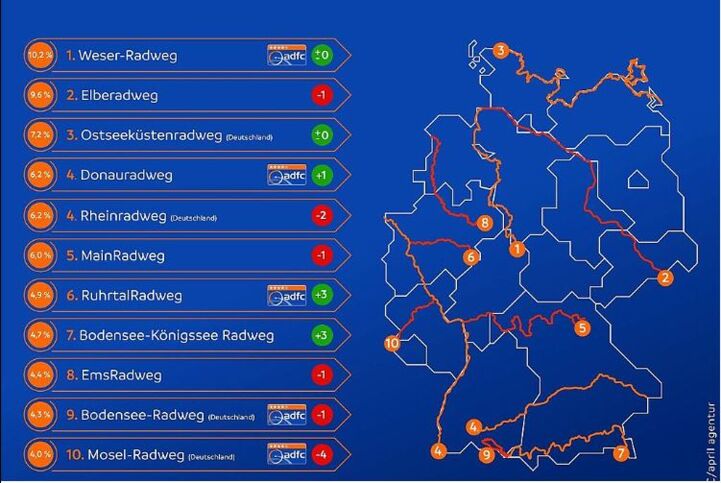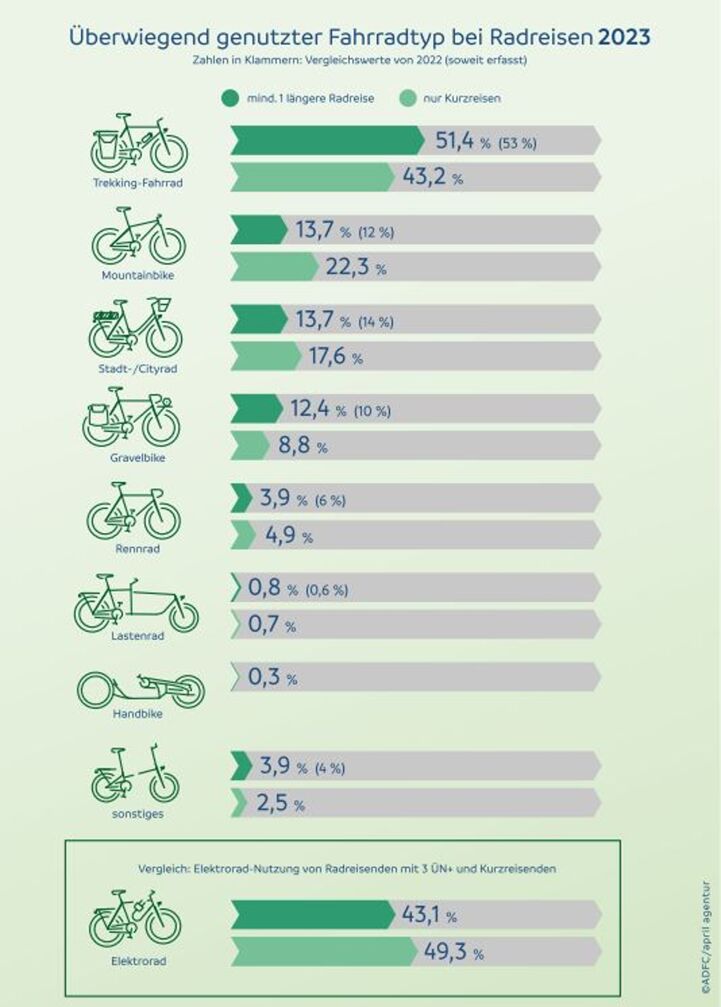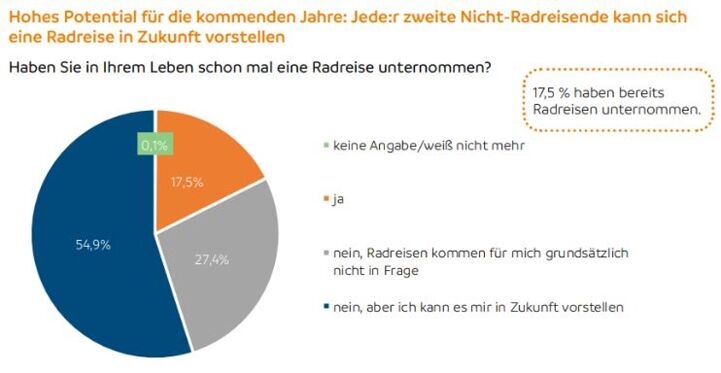ADFC Bicycle Travel Analysis 2024: another strong year for cycling in Germany
The ADFC-Radreiseanalyse (Bicycle Travel Analysis) is the latest installment in a long line of yearly reports released by the German National Bicycle Club – National EuroVelo Coordinator for Germany. The fact that Germany is one of the most cycling-crazy countries in Europe is no secret, but these representative analyses back this up year-on-year with impressive figures. For the first time ever, the study analyses an important element of the market: those who cycle on their holidays, even though it is not the main focus of their trip. These number an astonishing 10.6 million, more than a half of whom cycled on at least two-thirds of their days on holiday. A further novelty was an analysis of short holidays consisting of one or two overnight stays, whose main focus was on cycling. These numbered seven million holidays taken by five million people.
The Bicycle Travel Analysis reached a record number of participants this year, with around 16,000 members of the public responding. Two representative panels of around 1,000 participants each were combined with the answers of the cycling-enthusiastic members of ADFC to create a representative result.
EuroVelo routes remain amongst the most popular
Given that Germany has the joint-most EuroVelo routes of any country, with a staggering ten routes crossing the country, it comes as no surprise that they feature heavily amongst the most popular cycle routes:

- The second most popular route, the Elbradweg, forms part of EuroVelo 7 and EuroVelo 13.
- The third-placed Ostseeküstenradweg, situated on the Baltic Sea coastline, follows EuroVelo 10 and EuroVelo 13.
- In joint-fourth place come the Donauradweg and the Rheinradweg, two river routes. The Donauradweg follows the Danube along EuroVelo 6, while the Rheinradweg constitutes the German section of EuroVelo 15.
- The fifth-ranking Mainradweg passes through the stunning Frankonian and Hessian countryside along EuroVelo 4.
Among international destinations, Austria swapped places with Italy to take spot this year. Rounding out the top five are France, the Netherlands, and Denmark.
E-Bike usage continues to grow
Whether for day trips on a bicycle or on cycling holidays, the popularity of the e-bike is undeniable. 43.1% used e-bikes on day trips as well as holidays of 1-2 nights, a number which rises to a whopping 49.3% for longer trips. Those that included cycling in their generic holiday took e-bikes in 44.7% of cases. The type of bicycle used depended on the type of activity – amongst overnight cyclists and day-trippers, trekking bikes reigned supreme, while mountain and gravel bikes made slight gains. City bikes were the second-most popular option for day trips and the most popular choice for those who decided to hop on a bike during their non-cycling holidays.

Two-thirds of non-cycling tourists can imagine going on a cycling holiday
While 17.5% of those questioned have undertaken a cycling holiday previously, a majority are yet to dip their toes into the wonderful world of tourism on two wheels. The good news is that two-thirds of those who have not yet done so could imagine going on a cycling holiday in the future! Chief among the reasons people listed for not having done so yet were the amount of effort required, a lack of equipment, not finding suitable companions, and complications travelling to and from the route with their bicycles. This highlights the need to further increase multimodal options to allow for a seamless holiday start to finish.

How much money do cyclists spend?
For the first time, the bicycle travel analysis sought to illuminate the spending habits of cyclists. The results show the strong economic impact of cycling (tourism): Those on short trips spend an average of €130 per day for a total of €2-3 billion, while those on longer trips spent €117 per day on average, with an estimated total of €6-7 billion. The average day-tripper spends €32, as accommodation costs are out of the picture. The sheer number of day-trippers makes this segment the one with the highest economic impact, estimated to be €14-15 billion.
You can dive deeper into all the findings of the bicycle travel analysis 2024 (in German) in the article from ADFC, or directly in the report. An English version of the findings is available on the ADFC website.
Article by Mark Sheridan